

LaGG-3
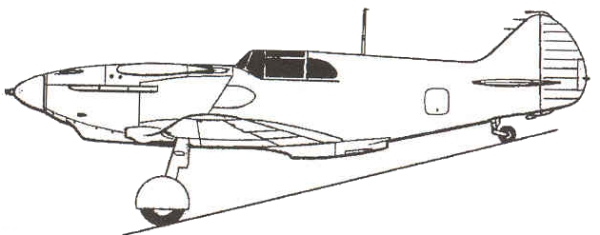
The Kit
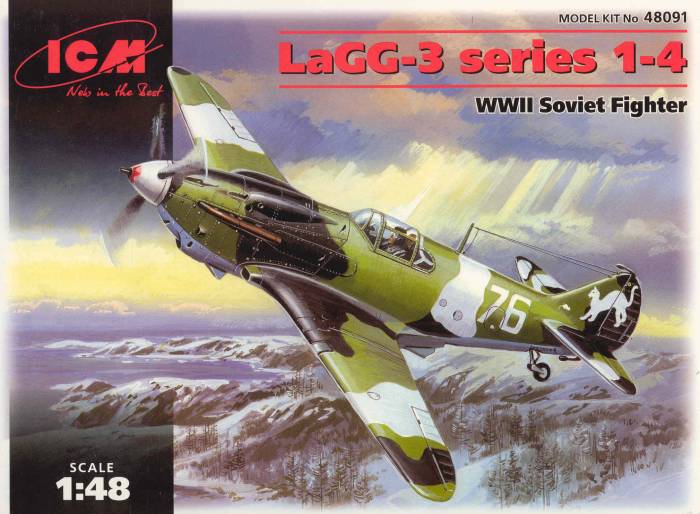
The ICM
Lagg-3 kit is a recent release from ICM and as such replaced the kit I
originally planned to build, the LTD model. There is no comparison
between the two kits, the ICM is everything the LTD kit is not. About
the only thing they share is that they both came in one of the dreaded
end flap boxes but the new ICM kit has much nicer artwork on it.
The
kit is molded in a dark gray color and the parts are cleanly molded
with just a hint of flash. There are some sink marks on the fuselage
opposite of where detail is molded on the interior. The parts have a
slightly rough surface, almost as if it had been sand blasted. Some
parts seem to be worse than others. It may not be a problem if a
primer
coat is used. The fabric areas are very nicely done, not over done as
is the case more often than not. Panel lines and fastener detail is
recessed and nicely done. Since much of the wing and fuselage was wood
there are not a lot of panel lines. The trailing edge of the wings is
nice and thin. The ailerons and elevators are fixed and the
demarcation
lines for those could be a little more pronounced but that is easily
fixed. The rudder is separate and could be posed off center if
desired.
The gear wells are boxed in but show no detail and the wheels and tires are nicely done but the tires are not weighted. The only troublesome ejector pin marks I found were on the inside of the gear doors which are otherwise nicely detailed and they will be covered by the gear struts when assembled. The cockpit is nicely done and should satisfy many right from the box. The propeller is one of those multi part affairs the Europeans seem to thrive on. There are a number of parts that don't get used that will most likely be used on future variants. As with most limited run kits there are no alignment pins. By my count there are 99 parts molded in gray. See photos below.
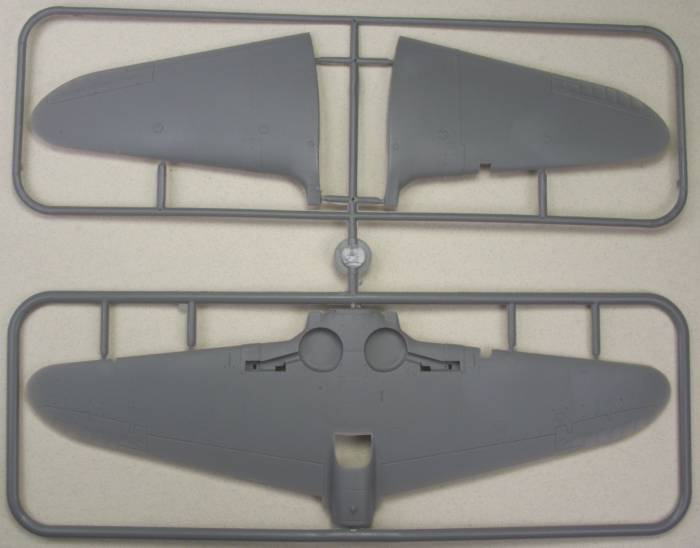
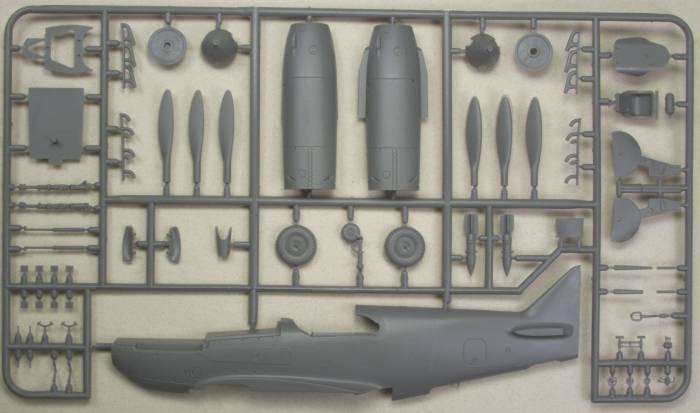
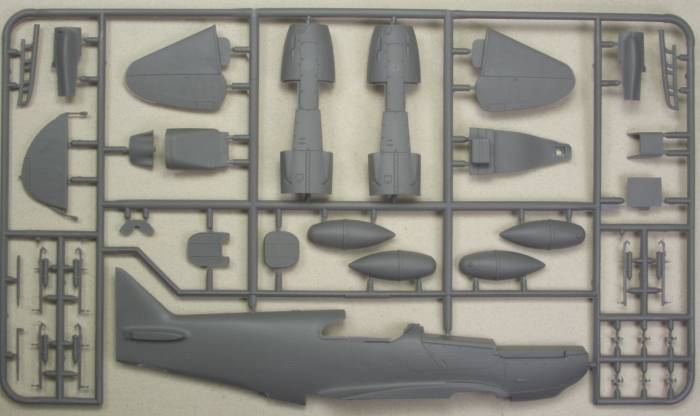
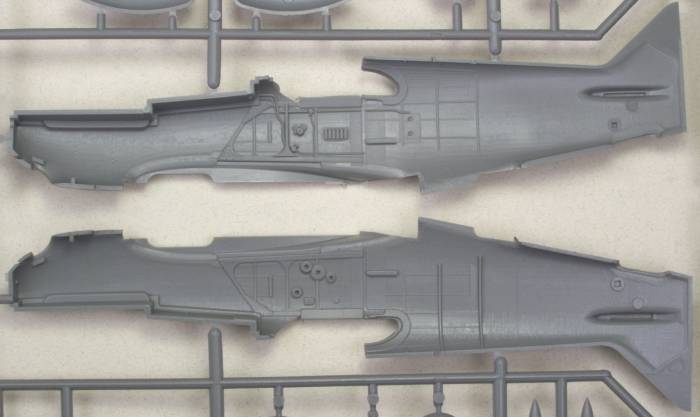
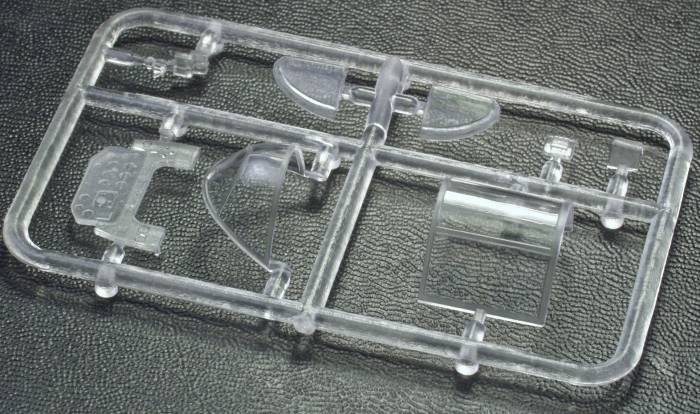
Decals are provided for three aircraft, two of which are for Major L. Galtchenko's aircraft, one during the Summer of 1942 and the other for Autumn of 1941. The other two are from the 44th IAP in the Leningrad area Autumn of 1941 and 3rd GvIAP Leningrad area Spring of 1942. The decals appear thin and are reasonably well registered where required. See photo below.
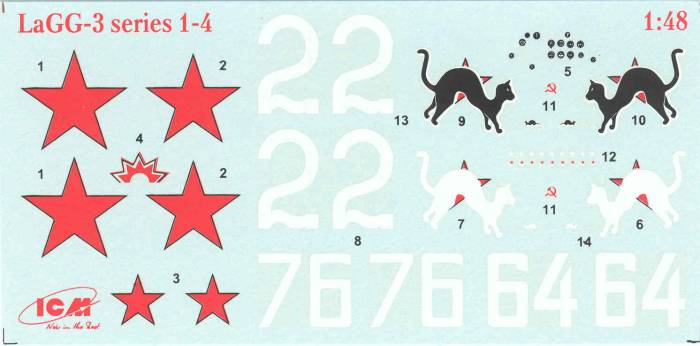
The instructions are printed on a single A4 sized sheet folded in half to form four panels. the first panel has a brief history and specifications and a parts map and icon chart. Panels two, three and half of four are assembly drawings. The balance of panel four has a paint chart with colors and Model Master numbers, decal instructions and the usual safety warnings. The marking and decal placement is on a separate sheet, slightly smaller than the instruction sheet, again folded to form four panels, one each for the markings supplied. The back of the box has a color diagram for the version shown on the box front, again calling out Model Master colors.
After Market Goodies
As is usually the case I couldn't help myself and ordered the Vector interior set [VD848-018] for it. Since Vector marketed a complete kit for the Lagg-3, albeit an expensive one, it probably was no big deal to cast up interior sets. The set is molded in dark gray resin and consists of sides, floor, seat, armor plate, instrument panel with film, rudder bar, stick and a whole host of other goodies to busy things up. Everything is what one has come to expect from Vector, clean sharp castings, no pin holes or short shots and assuming it fits without too much trouble should make up into a beautiful pit. See photo below
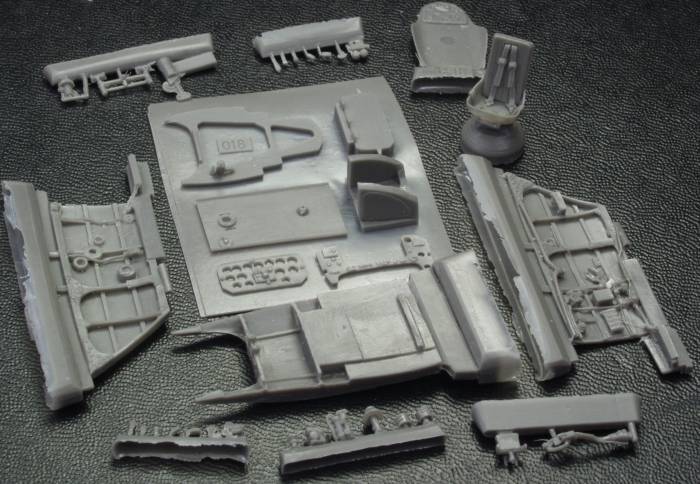
Since the instrument panel in the interior set would require painting I decided to add the Eduard [FE 427] color zoom photoetch set as well. It also included the usual levers and other fiddly bits that make my life miserable. See photo below.
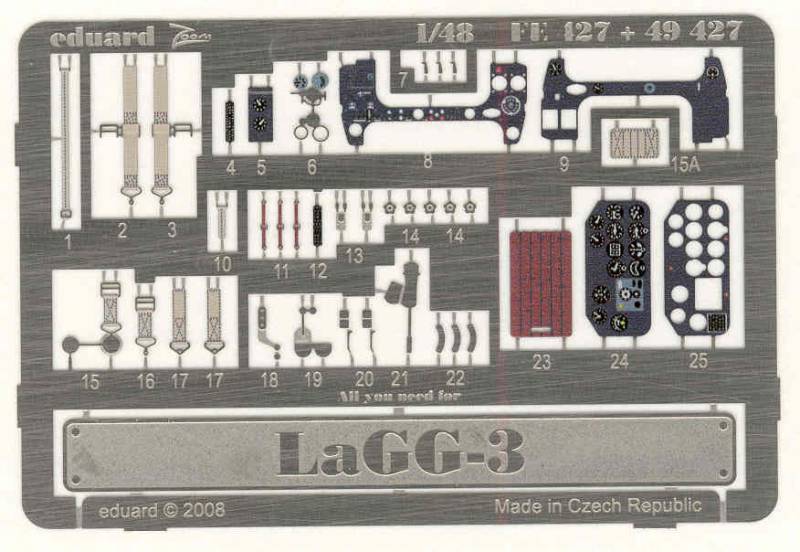
Conclusions
Links to kit build or reviews
Here is another in box review.
References
Soviet Aces of World War 2 by Hugh Morgan
A good online source of information on Soviet aircraft and markings can be found here.
Back to the Russians are Coming page
Updated 2/14/09